Kyushu Island is the third largest island of Japan’s main islands located southwest of the main island. There are seven prefectures on the island of Kyushu and they offer modern cities, unique cultures and traditions, amazing cuisine and drinks, and many important historic sites. Kyushu is famous for its natural beauty as well as its volcanic peaks and a large number of high-quality natural onsen. In this article, we will briefly introduce prefectures on Kyushu Island and the wonderful places to visit in Kyushu!
If you are planning a trip to Kyushu, be sure to check our ready to use 10 days Kyushu itinerary covering all of the highlights of Kyushu!
Highlights of Fukuoka – 福岡
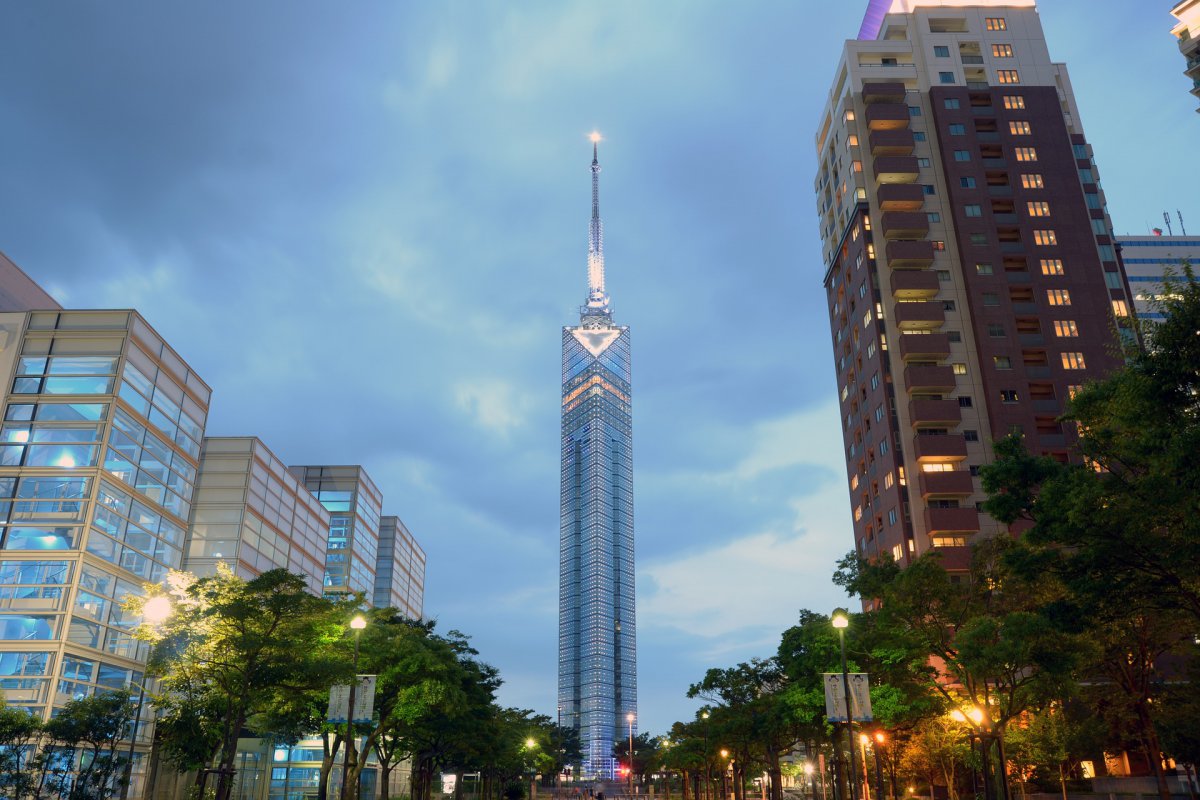
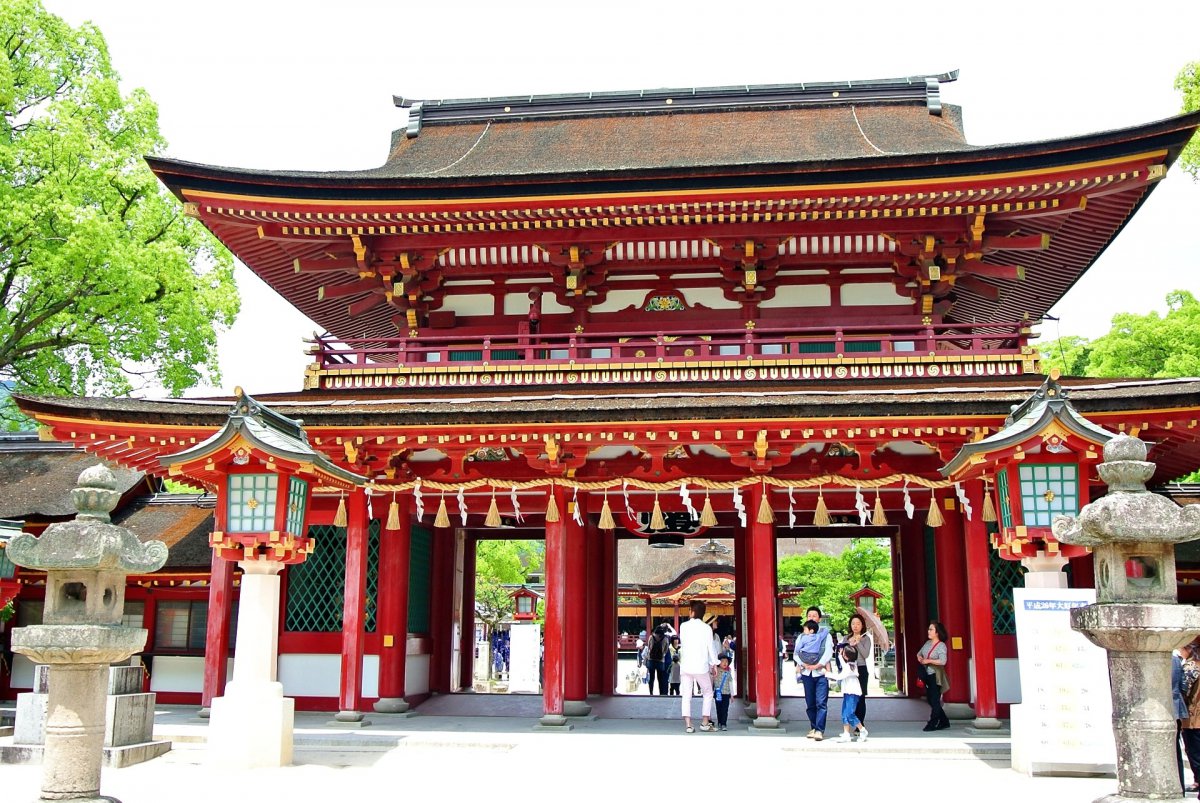
Located in the northernmost of Kyushu Island, Fukuoka Prefecture is the largest and most populated prefecture in Kyushu. Fukuoka City, the capital of Fukuoka Prefecture is a modern city with large shopping complexes, underground shopping streets, and plenty of restaurants to enjoy Fukuoka foods. The popular spots for tourists in Fukuoka City include the Tenjin area, Canal City Hakata, and Fukuoka Tower. Fukuoka is also known for its cuisine, attracting many people outside the prefecture to taste Fukuoka’s specialty foods such as Ramen noodles, Mizutaki (hotpot with chicken), Motsu nabe (hotpot with internal organ), and Mentaiko (spicy seasoned cod roe). There are also popular touristic spots scattered around the prefecture that are worth visiting. Dazaifu Temmangu Shrine is the most important Temmangu shrine in Japan, which is known as the god of education. In Nanzoin Temple, you can find one of the biggest bronze statues of Buddha in the world. Kawauchi Fujien is a large park in Kitakyushu famous for its beautiful wisterias from late April to early May. Other tourist attractions in Fukuoka Prefecture include Munakta Taisha, Kyushu National Museum, Ohori Park, Fukuoka Castle, Maizuru Park, and Sumioshi-jinja Shrine.
Highlights of Saga – 佐賀
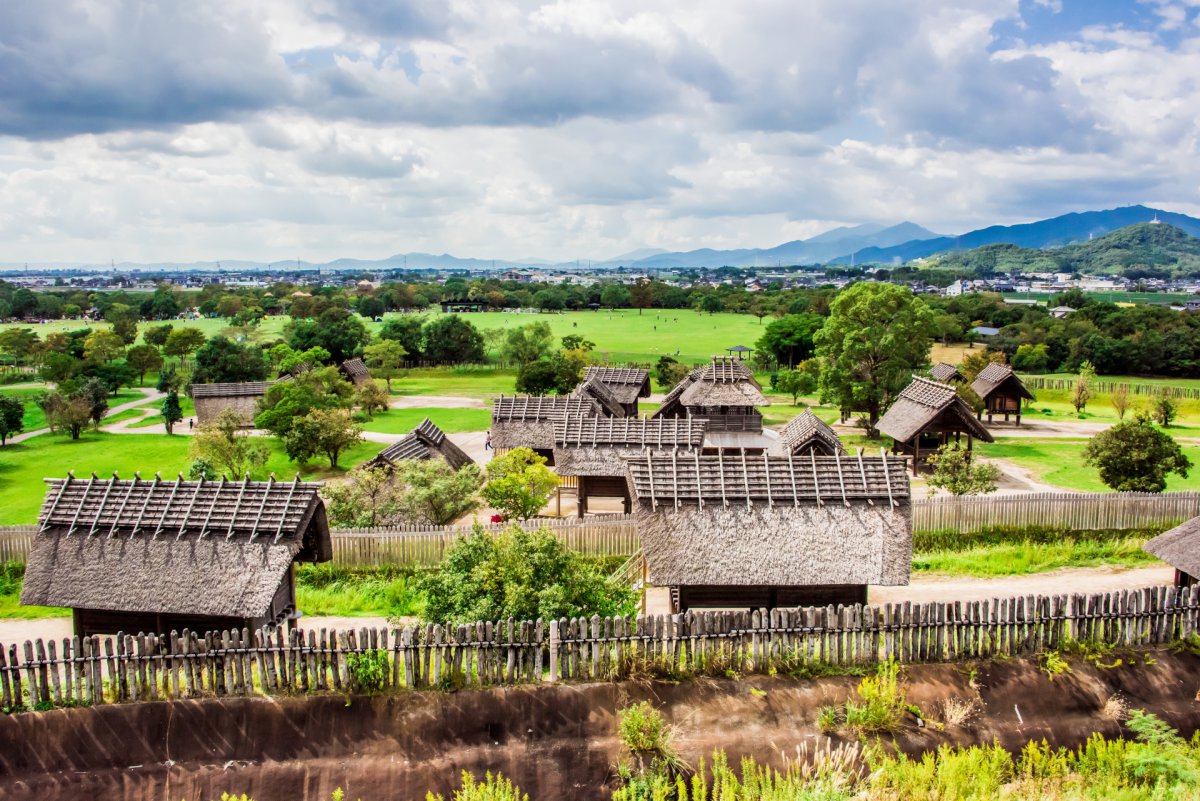
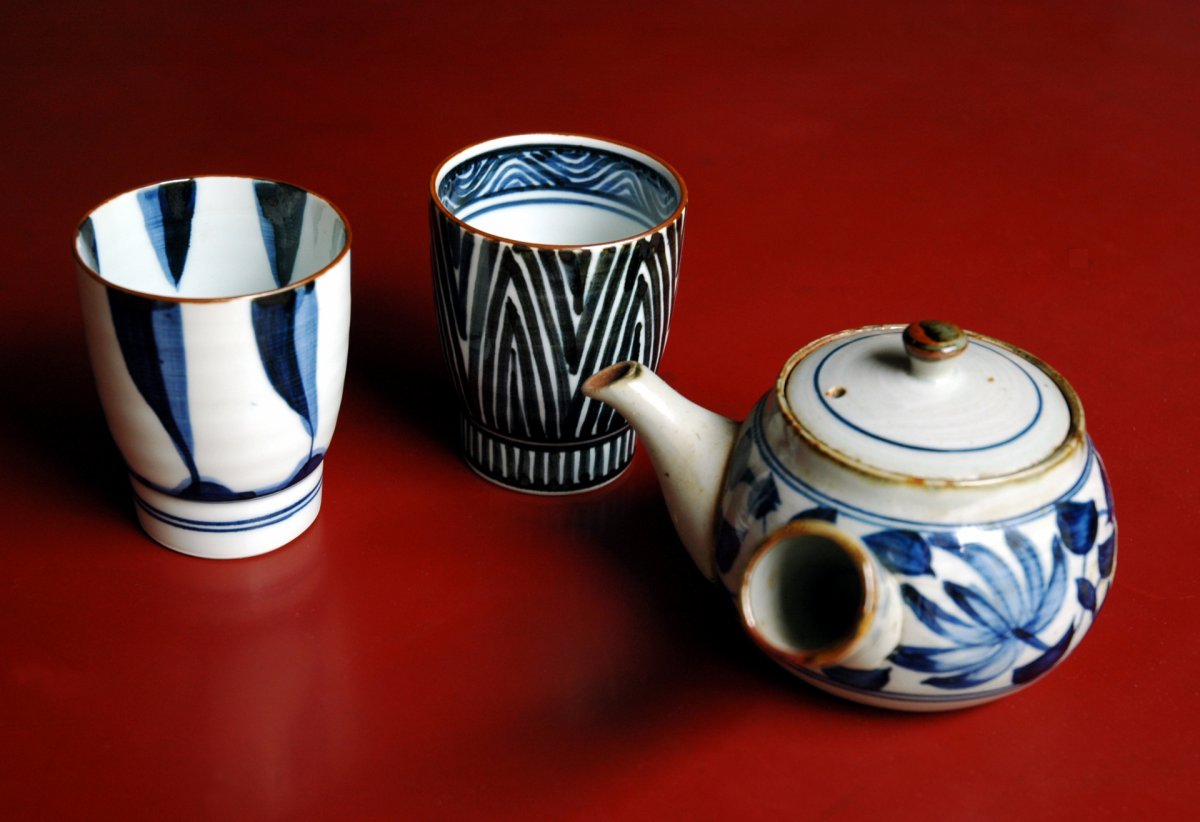
Saga Prefecture is a small prefecture that is famous for Japanese traditional porcelain. The town of Arita is the birthplace of Japanese porcelain and Arita porcelain is still popular nationwide. Arita Porcelain Park is a large park that contains a number of facilities including a workshop for Arita porcelain, restaurants, a Japanese sake brewery, gardens, and a museum for porcelains produced in Saga Prefecture. Another famous spot in Saga includes Yoshinogari Park, which is an outstanding archaeological site that dates back to the Yayoi Period (300 BC to 300 AC) with impressive reconstructed villages where you can explore and enter many of the houses. Other most visited places in Saga include two popular onsens (hot spring) resorts called Takeo Onsen and Ureshino Onsen, Saga Castle which was reconstructed from 2001 to 2004 and is claimed to be the largest wooden castle in Japan, and Yutoku Inari Shrine which is one of Japan’s top three shrines dedicated to Inari alongside Fushimi Inari in Kyoto and Toyokawa Inari Shrine in Aichi Prefecture.
Highlights of Nagasaki – 長崎
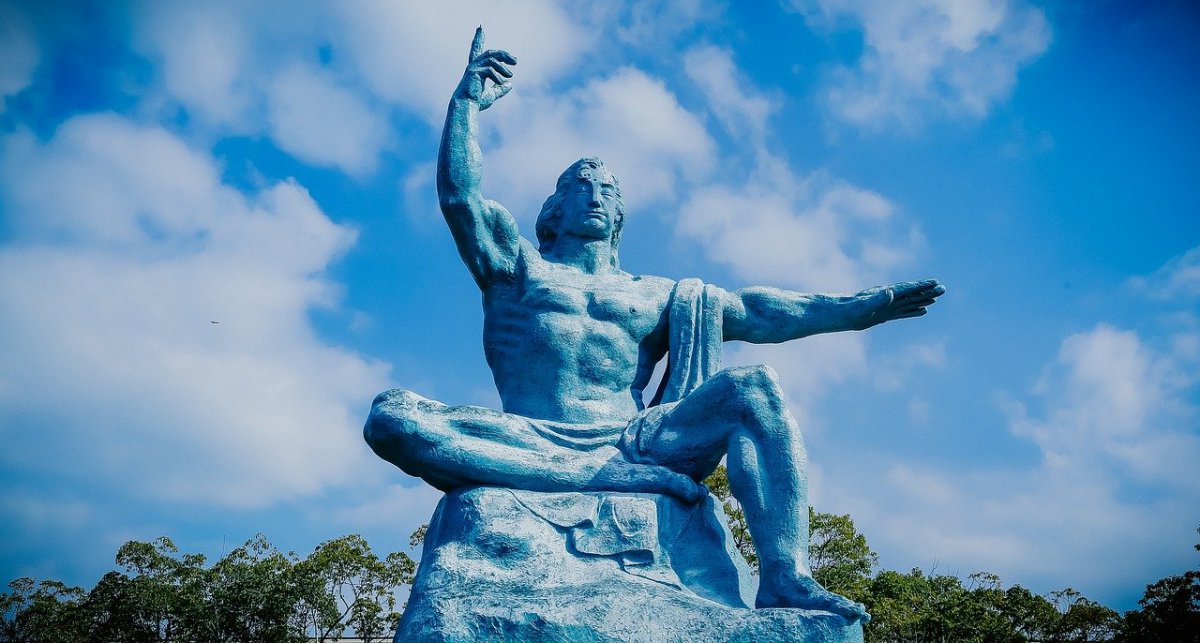

Nagasaki Prefecture, located on the west coast of Kyushu Island, offers important historical sites and constructions due to its unique location and historical events.
When the Japanese government severely limited trade between Japan and other counties between the mid-17th century to the mid-19th century, Hirado and Dejima in Nagasaki were the only ports in Japan that were open to international trade. Christianity was suppressed by the government during the Edo Period and many missionaries and their followers hid in the remote Goto Islands to secretly practice their religion. For this reason, Goto Islands offer several churches along with stunning views of great nature and a beautiful ocean. In addition, Nagasaki was the second city after Hiroshima which was destroyed by an atomic bomb toward the end of World War II. In the Peace Park built in 1955 in Nagasaki City, you can find the famous Peace Statue, fountains, memorial plate, Atomic Bomb Museum, and Peace Memorial Hall.
Other most visited places in the prefecture include Glover Garden, Inasa Yama Mountain, Huis Ten Bosch, Hashima (Gunkan-jima or Battleship Island) and Shimabara Peninsula.
Highlights of Oita – 大分
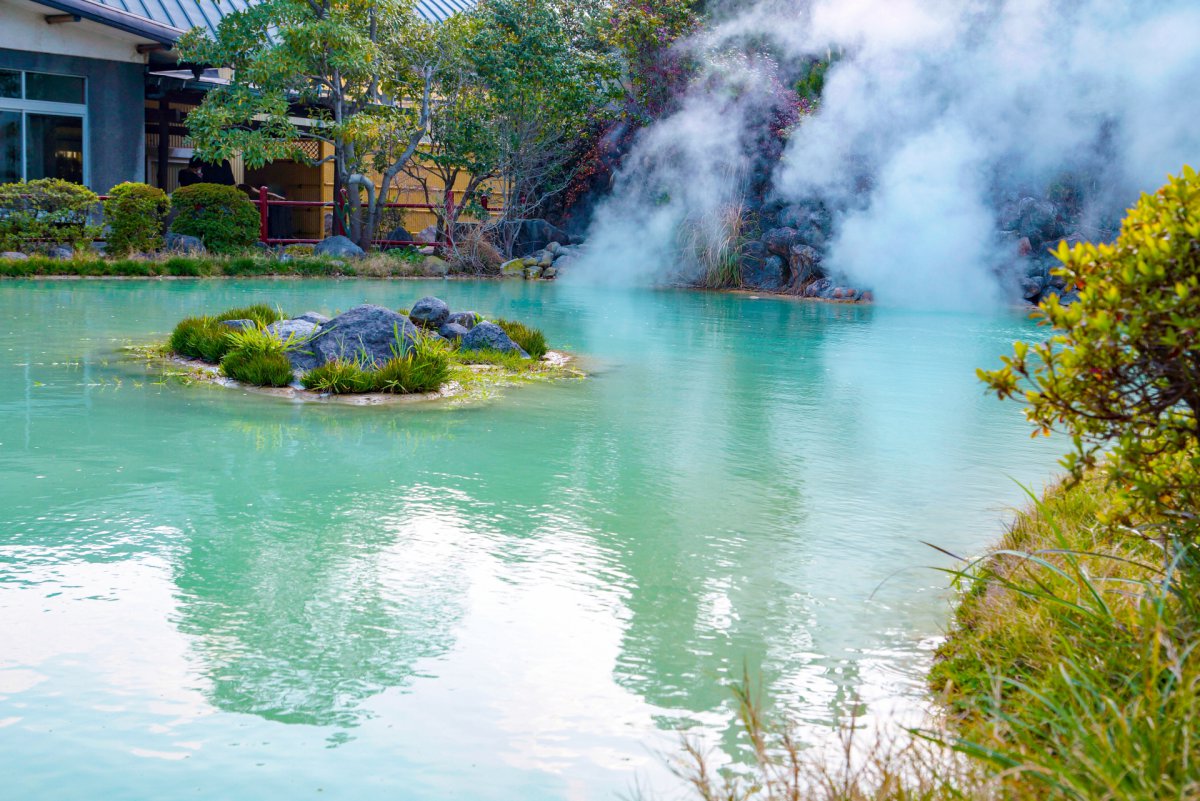

Oita Prefecture is known as the largest onsen (hot spring) resort in Japan. Beppu Onsen is Japan’s most popular hot spring resort with the greatest amount of thermal water from the spring in the country. Yufuin is another popular onsen town in the prefecture that offers not only relaxing baths but also beautiful nature, art, cafes, and boutiques. Harajiri no Taki has been selected as one of Japan’s Top 100 Waterfalls and is known as the Eastern Niagara Falls because of its spectacular scenery. Kunisaki Penisula, located in the north part of the prefecture, is home to a unique local religious culture called “Rokugo Manzan”, which is a mixture of Buddhism, Shinto, and mountain worship and the peninsula is dotted with dozen of historical temples, shrines and stone statues of various forms of gods. Other most visited places in Oita include Mount Yufu, Kuju Mountains, Nakatsu Castle and Usuki Sekibutsu.
Highlights of Kumamoto – 熊本
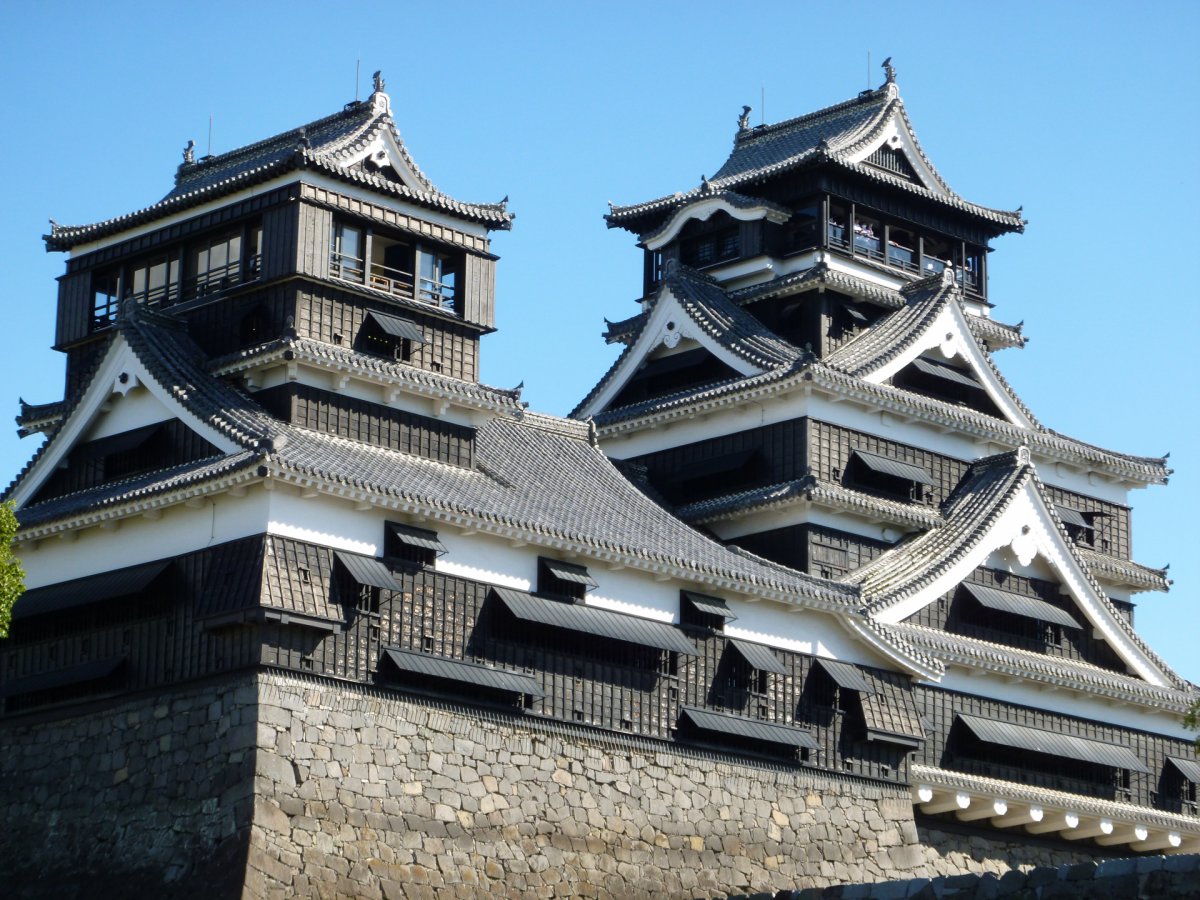
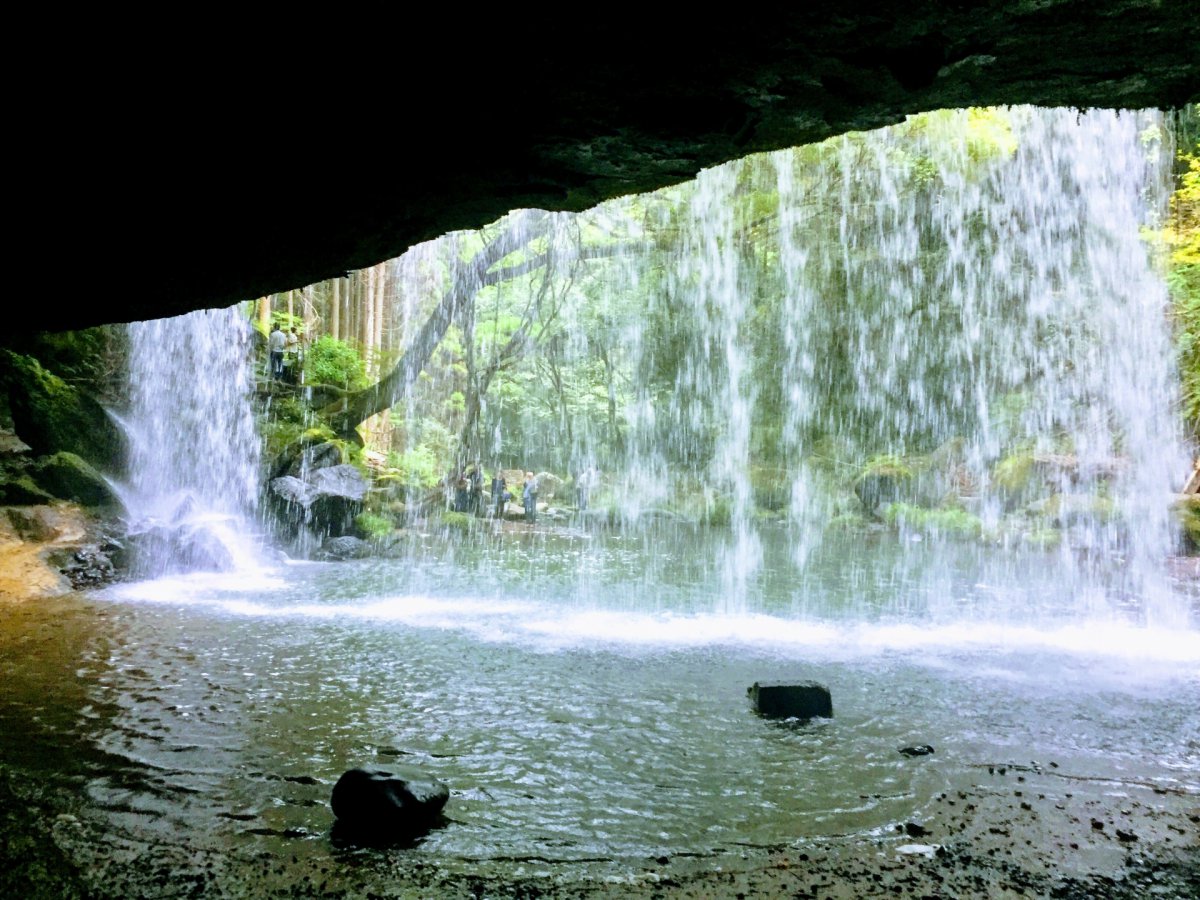
Kumamoto Prefecture is also called the “land of water” where spring water flows from more than 1,000 locations across the prefecture. The Aso region, the largest inhabited volcanic caldera in the world, is one of the top tourist attractions on Kyushu Island for nature lovers. The region offers five volcanic peaks of Mount Aso in the center of the caldera with stunning volcanic landscapes and the majestic caldera scenery all year round. The Daikanbo Viewpoint offers amazing panoramic views of the Aso caldera below, the caldera rim, and smoking Mount Aso in distance, and you can drive up to the Nakadake Crater where you can look into the volcano and walk around the area if the volcanic conditions permit. Kurokawa Onsen, located about 20 km north of Mount Aso, is an attractive hot spring resort with a traditional atmosphere, and Nabegataki Waterfalls which is located not far from Kurokawa Onsen is considered by many people to be the most beautiful waterfalls in Japan. Minamata City, on the west coast of Kyushu facing Amakusa Islands, was known due to Minamata Disease caused by mercury poisoning discovered in the 1950s, but in recent years the city is known as a model environmental city promoting recycling and environmental programs. In Minamata City there are several museums and educational facilities about Minamata Disease and the environment. Kumamoto City, the capital of Kumamoto Prefecture, is best known for Kumamoto Castle which is one of the largest and most complete reconstructions of castles in the country.
Highlights of Miyazaki – 宮崎
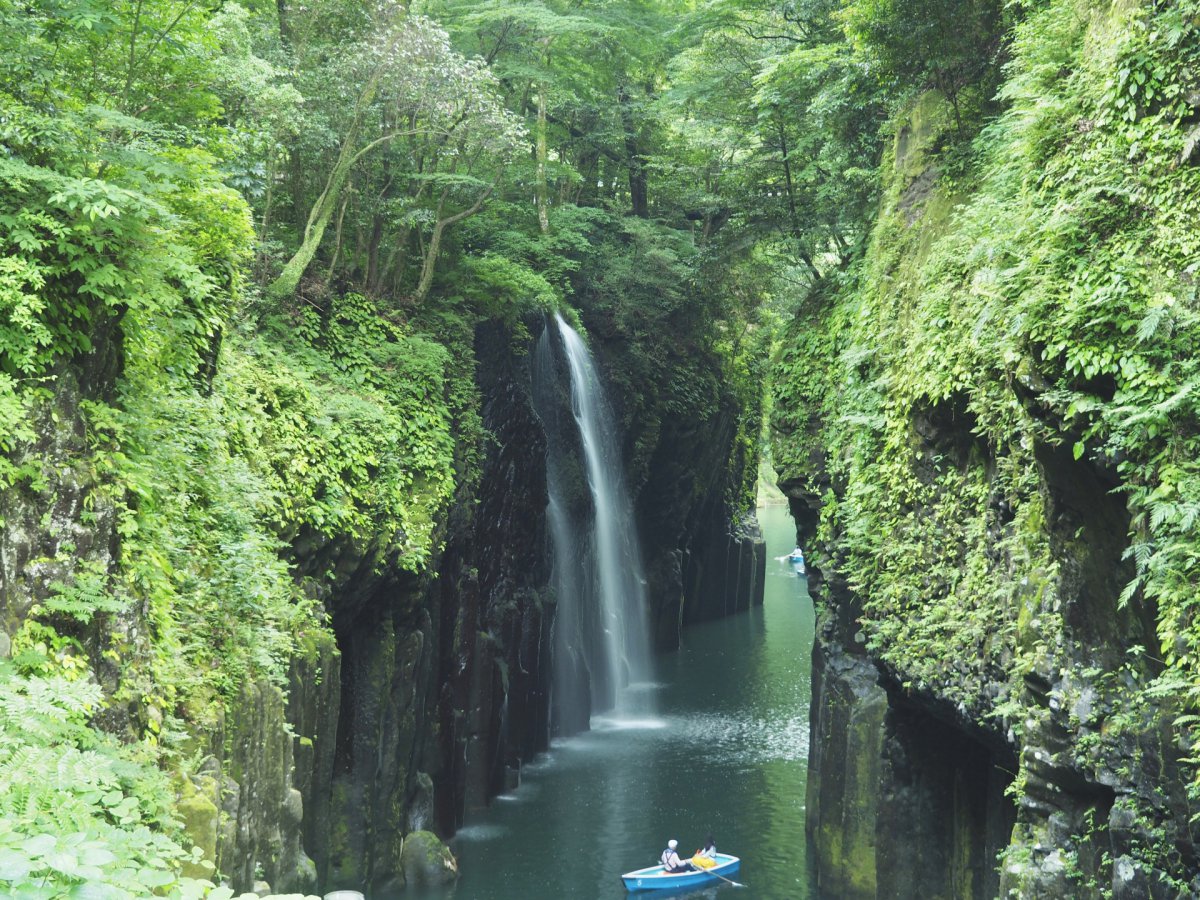

Located along the southeastern coast of Kyushu Island, Miyazaki Prefecture is known for its beautiful nature, warm climate, and important sites related to Japanese mythology. Takachiho Gorge is a v-shaped valley that appeared in Japanese mythology and is known as a power spot filled with spiritual energy. The stunning views of the gorge and the beautiful Manai Waterfalls can be enjoyed on foot or by a rowboat which gives you close access to the waterfalls. Kirishima Mountain Range consists of about 20 volcanic mountains lying on the border between Miyazaki and Kagoshima Prefectures which offer a wide range of trekking courses for beginners as well as for experienced hikers. The warm climate of the prefecture also attracts many people for marine sports, and especially Aoshima Island is famous as a top surfing spot where you can enjoy surfing all year round. When you are in Miyazaki, do not forget to try shochu which is Japan’s oldest distilled alcoholic beverage made from various ingredients including sweet potatoes, rice, buckwheat, and brown sugar. Almost any restaurants and bars offer several kinds of shochu.
Highlights of Kagoshima – 鹿児島

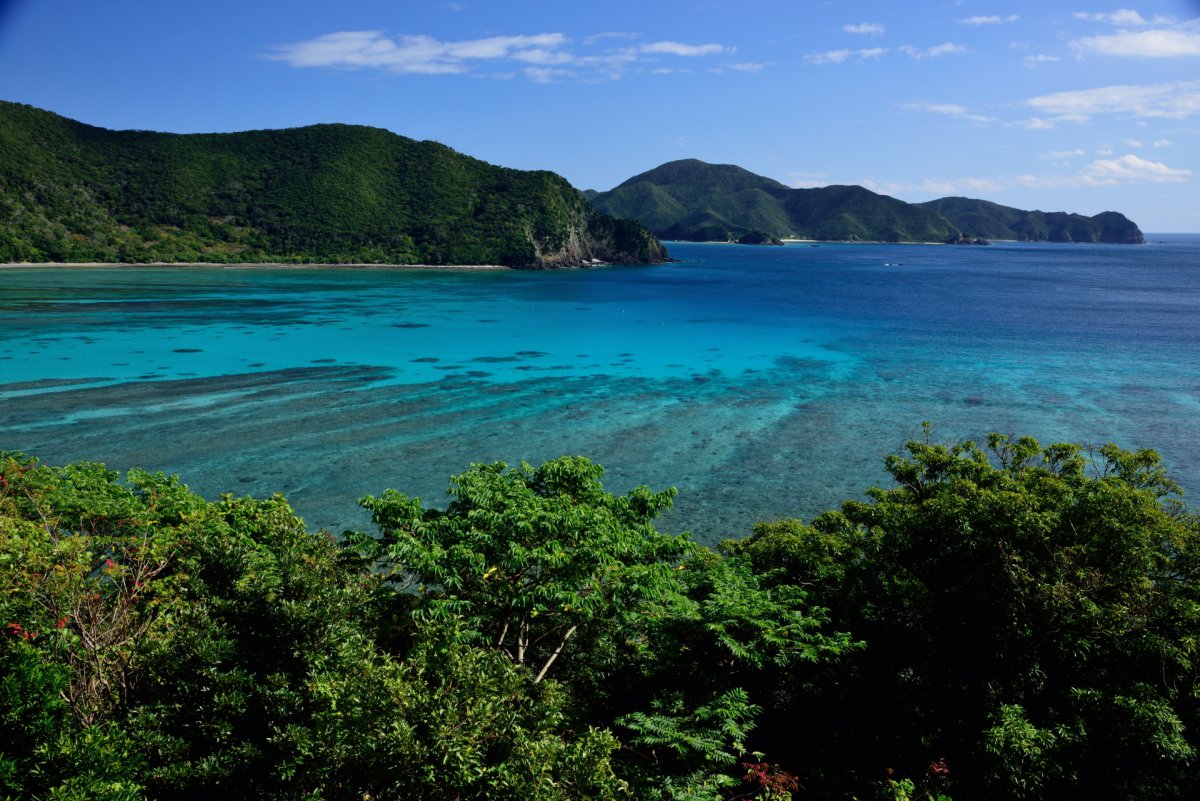
Located in the southernmost part of Kyushu Island, Kagoshima Prefecture features invigorating nature, unique hot springs, fresh seafood and amazing local cuisine. One of the most famous and popular spots in the prefecture is Yakushima, a small island located about 60 km south of Kyushu mainland, with towering mountains and ancient cedar forests. Some of the cedars are said to be over 2,000 years old. The Shiratani Unsuikyo Ravine on Yakushima with mossy-green woods and babbling streams is famous for being the inspiration for the Studio Ghibli animated film Mononoke Hime (Princess Mononoke).
Other tourist attractions in the prefecture are Amami Oshima and Tokunoshima which are other islands belonging to Kagoshima. These islands are popular destinations for their beautiful beaches with white sand, clear warm water, and colorful corals and aquatic life, perfect for swimming and snorkeling. Amami Oshima is also famous for Oshima Tsumugi silk which has been used for high-quality kimono for centuries. Tokunoshima Island is known for a variation of bullfighting called togyu. Satsuma Peninsula offers several tourist spots including natural sand baths in Ibusuki Onsen and Chiran, a small town with houses and gardens that date back about 260 years, Mount Kaimondake, also known as Satsuma Fuji because of its resemblance to Mount Fuji, and Cape Nagasakibana which offers stunning views of the Mount Kaimondake and surrounding area.
How to get to Kyushu from Tokyo and Osaka
From Tokyo
By air (from Haneda Airport)
To Fukuoka Airport (~1h50m)
To Kitakyushu Airport (~1h40m)
To Miyazaki Airport (~1.5hrs)
To Kumamoto Airport (~1h40m)
To Nagasaki Airport (~1h50m)
To Oita Airport (~1.5hrs)
To Kagoshima Airport (~1h40m)
By train
From Tokyo Station, take Tokai Sanyo Shinkansen to Hakata Station in Fukuoka (about 5 hours)
From Hakata Station, take Kyushu Shinkansen which stops at Hakata (Fukuoka), Shin-Tosu (Saga), Kumamoto, and Kagoshima.
From Osaka
From Shin Osaka Station, take Kyushu Shinkansen which stops at Hakata (Fukuoka), Shin-Tosu (Saga), Kumamoto, and Kagoshima. From Shin Osaka to Fukuoka, it will take about 2.5 hours, and from Fukuoka to Kagoshima it will take about 1.5 hours.
By ferry
If you are interested in night views of Seto Inland Sea, there is a ferry which leaves from Osaka-Nanko Port in the evening (5pm or 7.50pm) and arrives at Kitakyushu Shi Mojiko Port in the morning (5.30am or 8.30am). The ferry ride takes about 12 hours.
We hope that this overview of Kyushu is useful for you to make plans for your visit. There are many places in Kyushu with poor public transportation connections. A rental car or guided tour will make your trip easier and more time efficient. Read Perfect 10 Day Itinerary For Your Kyushu Trip on our blog before you go!
Follow us on Instagram or Facebook for more travel inspiration. Or tag us to get featured!
Happy traveling!

